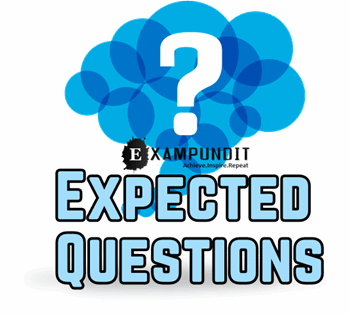Hello and welcome to ExamPundit. Here is the part 2 of Expected Questions from Insurance Terms and News.
1. The amount
payable, as stated in a life insurance policy, to the designated beneficiary
(ies) upon the death of the insured.
payable, as stated in a life insurance policy, to the designated beneficiary
(ies) upon the death of the insured.
– Death Benefit Payable
2. Section 39 of the
Indian Insurance Act 1938 provides for ___________.
Indian Insurance Act 1938 provides for ___________.
– Nomination of a person
3. The process takes
place when the claims examiner looks at the policy document and the evidence
submitted to him or her and makes a
decision to reject it.
place when the claims examiner looks at the policy document and the evidence
submitted to him or her and makes a
decision to reject it.
– Repudiation of a claim
4. A form of
insurance in which individual policies are issued to the employees of a common
employer or the members of an association
under an arrangement by which the employer or association agrees to collect the premium and remit them to the
insurer.
insurance in which individual policies are issued to the employees of a common
employer or the members of an association
under an arrangement by which the employer or association agrees to collect the premium and remit them to the
insurer.
– Franchise Insurance
5. What does GIVE
stands for in Insurance?
stands for in Insurance?
– Gross Insurance Value Element
6. A policy designed
to provide coverage under a single limit for two or more items (e.g. building
and/or contents), two or more
locations, or a combination of items and/or locations.
to provide coverage under a single limit for two or more items (e.g. building
and/or contents), two or more
locations, or a combination of items and/or locations.
– Blanket Insurance
7. A No-claim Bonus
(or No-claim Discount) system in which the premium level reached after a policyholder has made claims may be higher
than that corresponding to the point of entry.
(or No-claim Discount) system in which the premium level reached after a policyholder has made claims may be higher
than that corresponding to the point of entry.
– Bonus-malus
8. A company owned
solely or in large part by one or more non- insurance entities for the primary
purpose of providing insurance coverage
to the owner or owners.
solely or in large part by one or more non- insurance entities for the primary
purpose of providing insurance coverage
to the owner or owners.
– Captive Insurance Company
9. In insurance, an
exceptional loss for example, resulting from a flood or earthquake is called?
exceptional loss for example, resulting from a flood or earthquake is called?
– Catastrophe Risk
10. Amount of the
insurance ceded to a reinsurer by the original insuring company in a
reinsurance operation.
insurance ceded to a reinsurer by the original insuring company in a
reinsurance operation.
– Cession
11. A single
insurance company writing both life and non-life business.
insurance company writing both life and non-life business.
– Composite insurer
12. The portion of an
insured loss borne by the policyholder.
insured loss borne by the policyholder.
– Deductible
13. Any insurance
risk resulting from a human decision.
risk resulting from a human decision.
– Dynamic Risk
14. Estimated Maximum Loss (EML) is used in
__________.
__________.
– Fire, explosion and material damage insurance policies.
15. Type of insurance
or reinsurance that covers a whole account over a period of time. No payment is
made until the accumulated losses in the
year exceed the stop-loss level.
or reinsurance that covers a whole account over a period of time. No payment is
made until the accumulated losses in the
year exceed the stop-loss level.
– Stop-Loss
Regards
Team ExamPundit
Sponsored
(adsbygoogle = window.adsbygoogle || []).push({});
Books For 2015 Banking/Insurance Exams




